


A training programme on “Integrated Water Resources Modelling under a Changing Climate in the Indian Himalayas” was organized by the Swiss Agency for Development and Cooperation (SDC), in collaboration with the Government of Uttarakhand from 21-24 November, 2022 at National Institute of Hydrology (NIH), Roorkee. This was followed by a stakeholder meeting in Dehradun on Glacio-hydrological modelling and IWRM planning for a sub-basin in Bhagirathi Basin, Uttarakhand on 25 November, 2022.
The objective was to undertake extensive capacity building in glacio-hydrological modelling and Integrated Water Resources Management (IWRM) planning for relevant stakeholders and seek their feedback for the development of an IWRM plan and web-based Decision Support System (DSS) to support preparation and implementation of the IWRM plan.
SDC, as part of its strategy on climate change adaptation, has been partnering with the national and the sub-national governments of the Himalayan States for water resources management. SDC is supporting the operationalization of climate change adaptation actions in the State of Uttarakhand through the “Strengthening Climate Change Adaptation in Himalayas (SCA-Himalayas)” project during 2020-24. The project works in close collaboration with the Directorate of Environment Conservation and Climate Change, Government of Uttarakhand.
The accelerated rate of glacial melt in some of the important glaciers in Uttarakhand will have serious consequences for the freshwater ecosystems in the downstream river basins. The water demand is growing across all sectors- agriculture, industrial and domestic. The variability and uncertainty in water availability and increased demand across sectors raise concern among stakeholders and policymakers. To ensure water security for all in India, and in particular Himalayan states, Integrated Water Resources Management (IWRM) is the key solution. To cover the ambitious objectives on an IWRM, a consortium of national and international experts from FutureWater, Utrecht University from the Netherlands, University of Geneva and The Energy and Resources Institute (TERI), India was mandated to develop a glacio-hydrological and a water allocation model with focus on Dingad Catchment (encompassing Dokriani glacier) and Bhagirathi River Basin in Uttarakhand to support development of an IWRM plan.
The training program was inaugurated by Dr. Sudhir Kumar, Director, National Institute of Hydrology, Roorkee. Mr. Rishi Srivastava, Chief Engineer, Basin Planning & Management Organisation, Central Water Commission (connected virtually), Dr. Johannes Hunink, Managing Director, FutureWater, Dr. Sanjay Jain, Dr. Manohar Arora, Scientists from NIH participated in the inauguration. Sixteen persons from various state government departments, and other institutions participated in this four-day training program.
The stakeholder meeting was organized in Dehradun on 25 November. Mr. S.P. Subudhi, IFS, Director, Directorate of Environment Conservation and Climate Change, Govt of Uttarakhand, Ms. Neena Grewal, IFS, Project Director, Watershed Management Directorate, Dr. Piyoosh Rautela, Executive Director, Uttarakhand State Disaster Management Authority and other senior officials from Government of Uttarakhand participated in the stakeholder meeting. About 70 persons from various state and central govt departments, educational and technical institutions, PSUs, NGOs, project implementing organizations and SDC participated in the meeting.
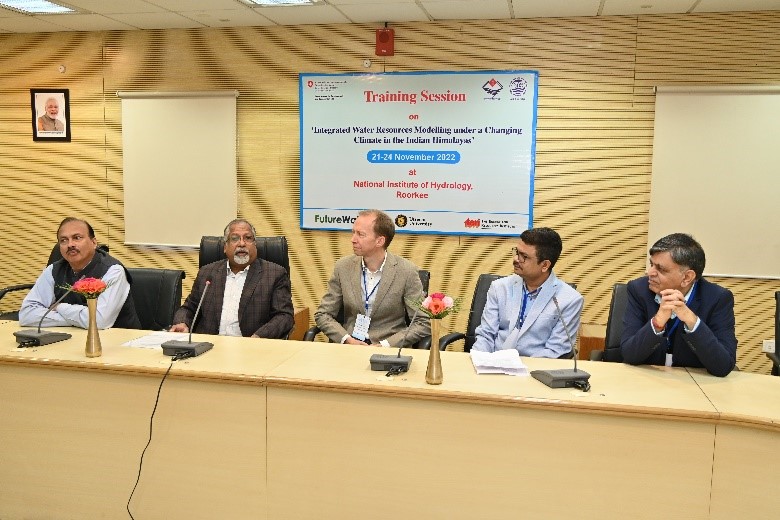
Inauguration of the training program at NIH, Roorkee
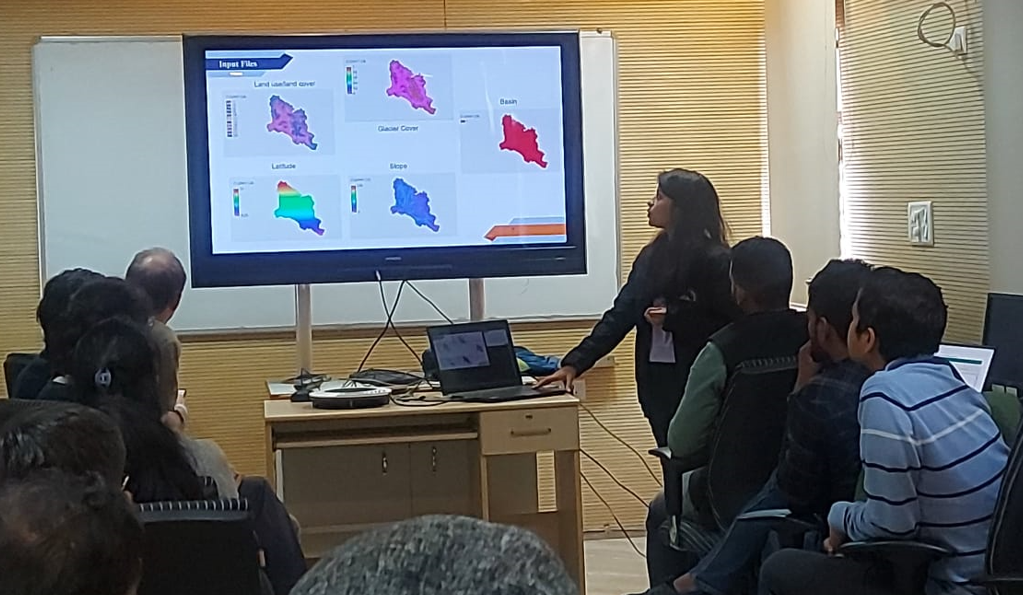
Training on glacio-hydrological and water allocation modelling in Roorkee
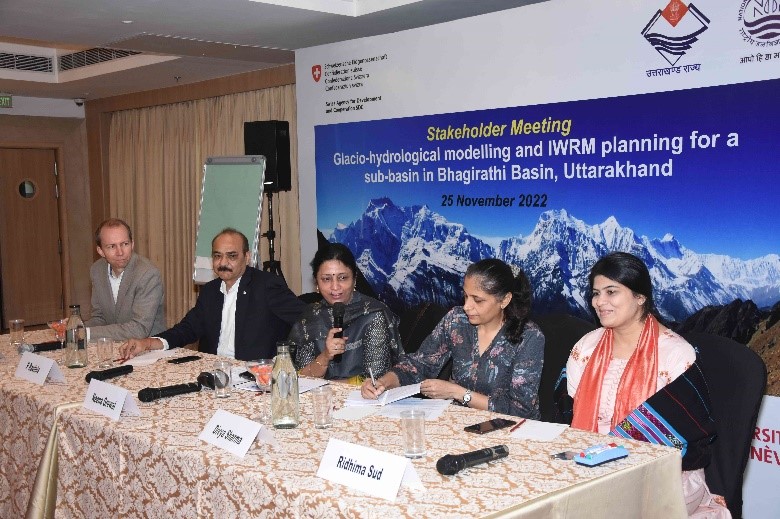
Stakeholder meeting inauguration at Dehradun
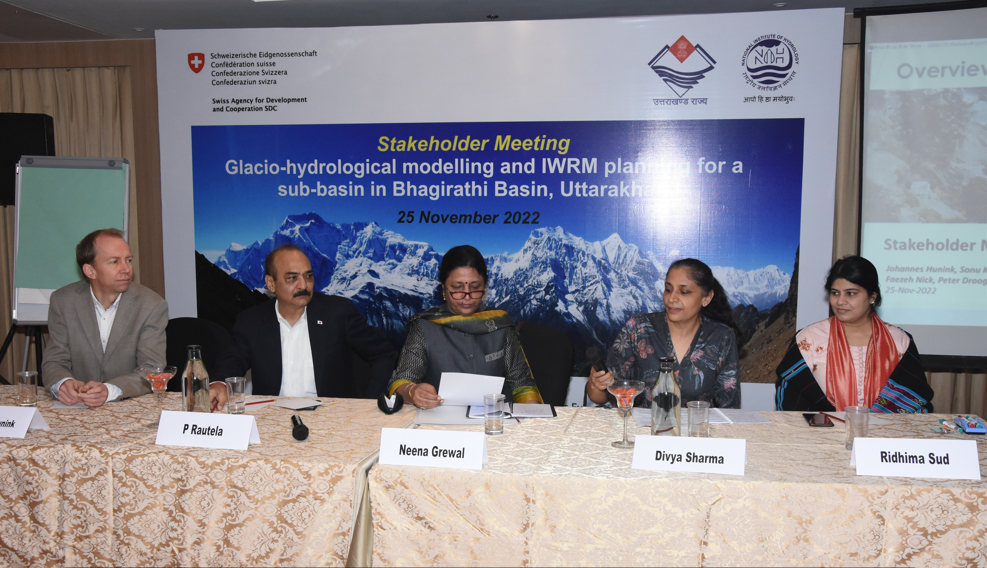
Stakeholder meeting inauguration at Dehradun
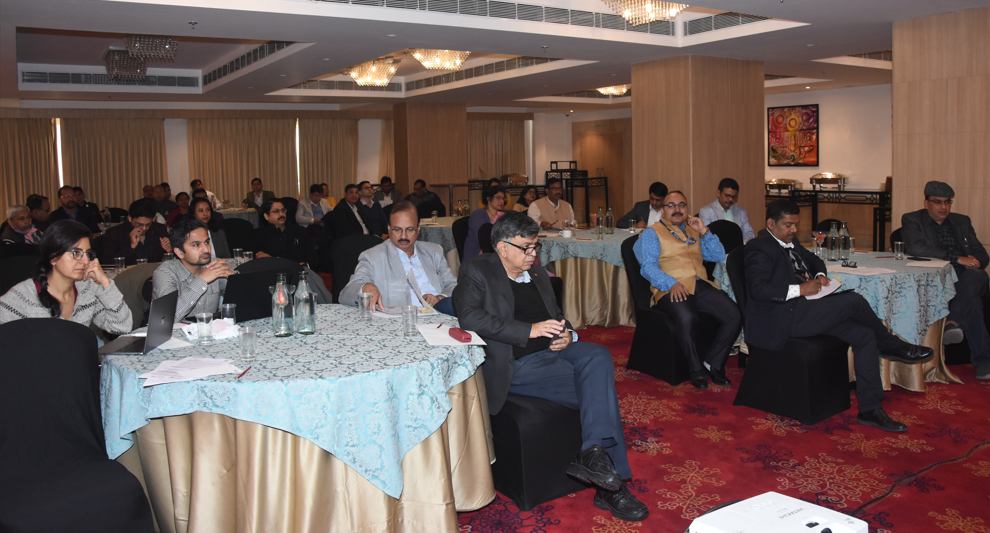
Working group discussion in the stakeholder meeting in Dehradun
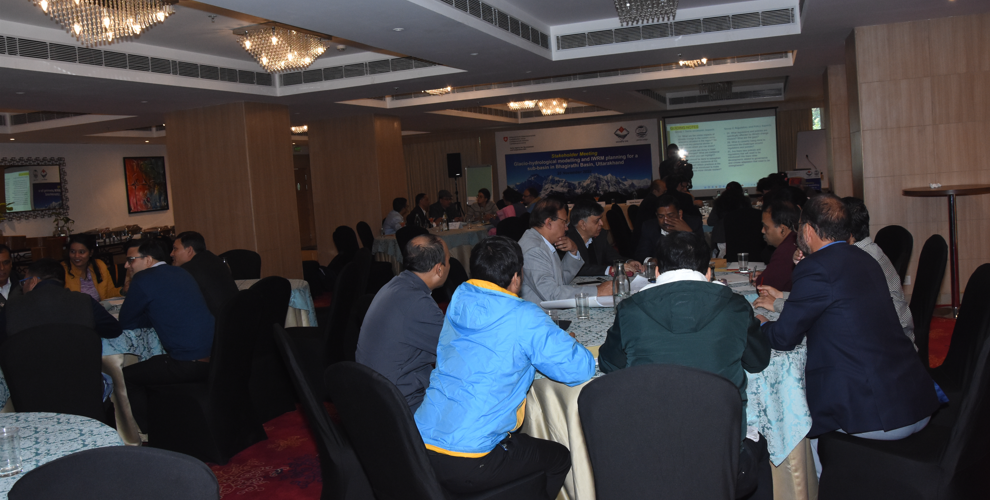
Working group discussion in the stakeholder meeting in Dehradun
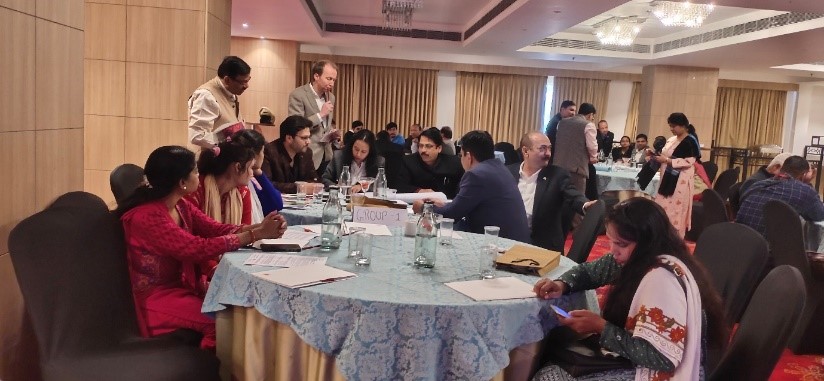
Working group discussion in the stakeholder meeting in Dehradun




